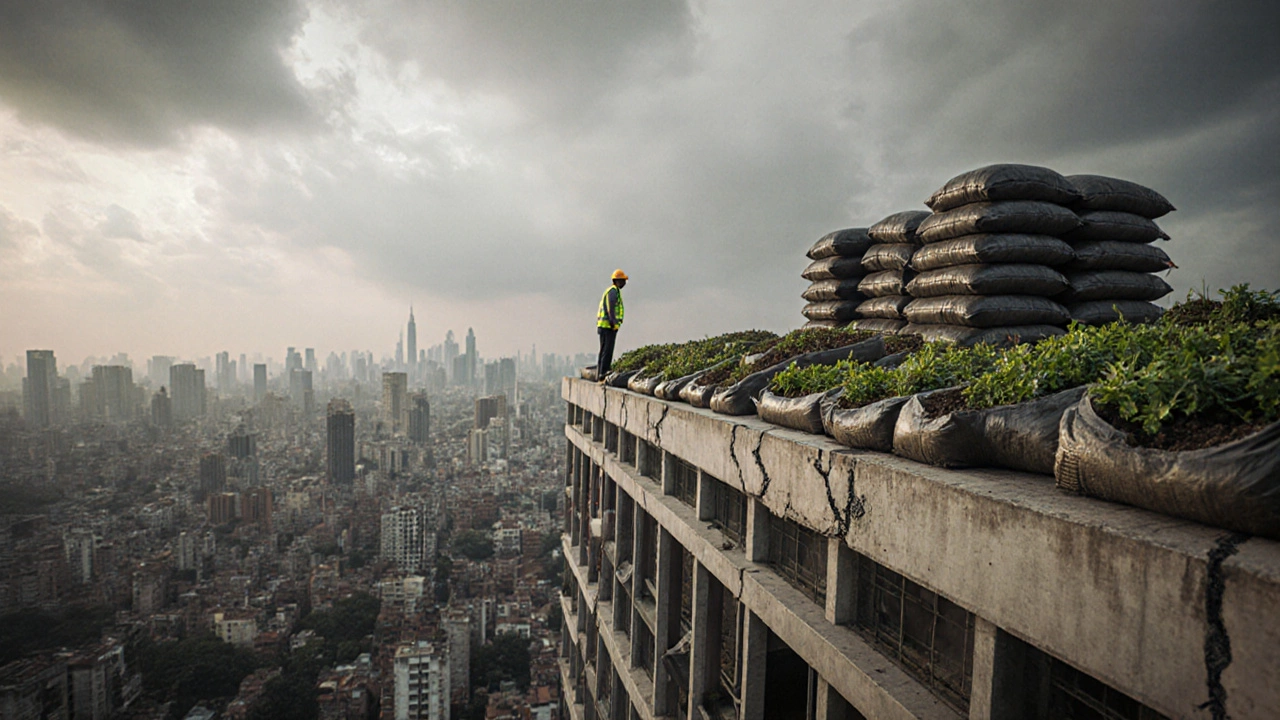Rooftop Farming Cons: Real‑World Challenges for Indian Gardeners
Thinking about turning your terrace into a veggie patch? It sounds great until you hit the first roadblock. Rooftop farms can bring fresh produce, but they also come with a set of headaches that many overlook. Below we break down the biggest cons so you can decide if the upside really beats the downside.
Structural Limits and Safety Risks
Most Indian apartments were built for people, not heavy soil beds. Adding a few kilograms of wet soil per square foot can quickly exceed the roof’s load capacity. If the structure isn’t reinforced, you risk cracks, leaks, or even a collapse. Before you buy pots, talk to the building engineer and get a clear load limit in writing.
Even if the roof can hold the weight, uneven distribution creates weak spots. Spread the load with a sturdy deck, but remember that every extra layer adds cost and labor. Ignoring these limits can lead to expensive repairs for you and other residents.
High Initial Investment and Ongoing Costs
Setting up a rooftop garden isn’t cheap. You need waterproofing, a drainage layer, raised beds or containers, and often a lightweight soil mix. In many cases, you’ll also need a windbreak or shade netting to protect plants from strong breezes.
Watering adds another bill. Unlike ground‑level gardens that can tap into rainwater easily, rooftop farms often need a pumped system, which means a pump, hoses, and electricity. Over time, the maintenance of these components can add up to a noticeable monthly expense.
Water management itself is a major pain point. On a roof, water runs off fast, so retaining enough moisture for plants can require drip irrigation or frequent manual watering. In hot Indian summers, the soil dries out quickly, leading to higher water use and the risk of plant stress.
Temperature swings are harsher up high. Roofs heat up faster than ground level, which can scorch seedlings or force you to add shade cloths. In winter, the same surface can become significantly colder, slowing growth and sometimes killing tender crops.
Access is another practical issue. Carrying bags of soil, pots, or harvested produce up and down stairs takes time and effort. For many, this extra work defeats the purpose of a “convenient” city garden.
Legal and community hurdles can also pop up. Some housing societies ban rooftop farming because of insurance concerns or the potential for water leakage into lower units. Always check the bylaws before you start, or you might face a forced removal.
Lastly, pest control is trickier. Rooftop farms are closer to the sky, which means more exposure to birds, insects, and even airborne pollutants. You may need to invest in netting or organic pest solutions to keep crops healthy.
In short, rooftop farming offers fresh produce and a green view, but it demands careful planning, budget awareness, and ongoing effort. Weigh these cons against your goals and resources before you go ahead. If you can manage the weight, cost, water, and maintenance, the reward can be worth it – otherwise, a balcony garden or community plot might be a smarter choice.

The Hidden Drawbacks of Rooftop Farming
Explore the major drawbacks of rooftop farming, from structural load limits and water leakage to high costs, regulatory hurdles, and microclimate challenges, plus tips to mitigate the risks.
About
Sustainable Gardening
Latest Posts


Who First Discovered Rice? Tracing the Ancient Roots of Rice Cultivation
By Alden Thorne Jul 29, 2025

Pebble Tray Care: How Often Do You Need to Fill It?
By Alden Thorne May 20, 2025

Should You Bury Your Drip Irrigation System?
By Alden Thorne Apr 6, 2025
